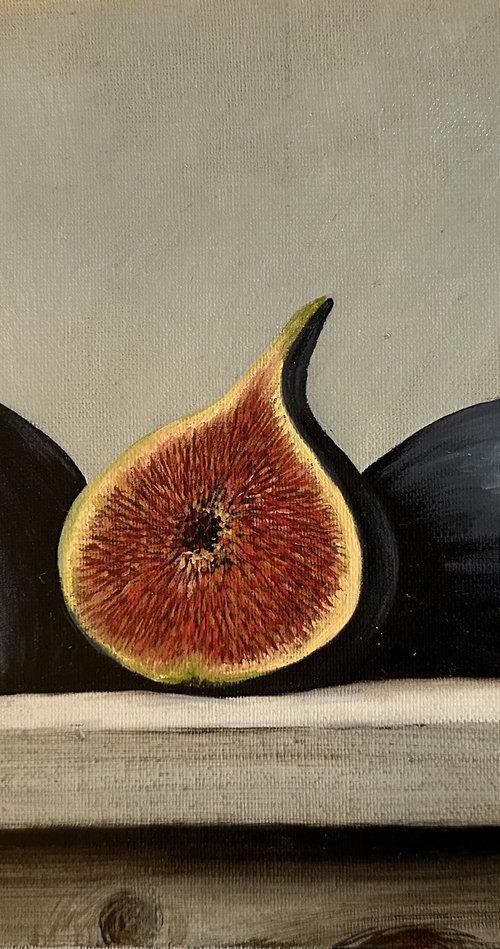Colorful Nature-Themed Oil Paintings for Sale
Colorful Nature-Themed Oil Paintings for Sale
Blog Article
Exploring Everything About Oil Paints: An Overview to Recognizing Their Appeal and Worth
Oil paints have mesmerized audiences for centuries, using a peek into the imaginative proficiency of different eras. Their abundant history is linked with cutting-edge strategies and profound emotional expression. Understanding the products and techniques behind these art work can improve recognition. Furthermore, the market for oil paints provides opportunities for investors and enthusiasts alike. As one explores this fascinating globe, the question emerges: what makes an oil painting truly beneficial?
The History of Oil Paint: A Trip Through Time
Oil painting has origins that date back to ancient times, it absolutely grew throughout the Renaissance, when artists uncovered its flexibility and abundant color possibility. Early examples can be mapped to the 7th century, with methods evolving significantly throughout cultures. The tool became famous in Northern Europe in the 15th century, specifically with the works of artists like Jan van Eyck, who originated its usage for comprehensive realistic look and vibrant colors. This duration marked a separation from tempera paints, permitting for higher deepness and texture. As oil paint spread, it influenced many musicians, resulting in work of arts by popular numbers such as Leonardo da Vinci and Rembrandt. The tool's heritage continues, shaping the art world well into modern-day times.
Comprehending Oil Paints: Materials and Techniques
As artists check out the globe of oil paints, they run into a diverse array of materials and methods that specify this medium. The key parts of oil paint include pigments, which provide color, and drying oils, such as linseed, that bind the pigments and assist in application. Numerous ingredients can customize the paint's structure and drying out time, boosting versatility. Techniques like glazing, where transparent layers are developed up, and impasto, which includes applying thick paint, enable for various aesthetic results. In addition, making use of brushes, scheme blades, and also fingers can develop one-of-a-kind textures and coatings. Understanding these techniques and materials makes it possible for musicians to totally share their creative thinking and attain the wanted influence in their artwork.
The Function of Color in Oil Paints
Shade plays a pivotal function in oil paints, influencing both aesthetic charm and emotional vibration. Comprehending shade concept basics, consisting of the partnerships between hues, can boost an artist's ability to communicate mood and ambience. Furthermore, mastering shade mixing strategies permits greater deepness and richness in a paint's palette.

Color Theory Basics
Understanding color concept is crucial for musicians working with oil paints, as it forms the foundation for creating aesthetically appealing and unified compositions. Shade theory encompasses the study of just how colors communicate, the color wheel, and the partnerships between key, additional, and tertiary shades. Artists make use of complementary shades to improve contrasts and develop centerpieces, while similar colors advertise unity and cohesiveness within an item. Additionally, the principles of cozy and cool shades influence the assumption of depth and area in a paint. Realizing these principles enables musicians to manipulate color efficiently, assisting the viewer's eye and communicating their designated message. Proficiency of color theory inevitably enriches an artist's capacity to convey emotions and concepts through their work.
Psychological Influence of Shade
The emotional influence of color in oil paintings plays an essential function in just how viewers attach and perceive with art work. Colors evoke particular sensations and state of minds, affecting the visitor's emotion. Cozy tones like oranges and reds can develop a feeling of heat and energy, while amazing tones such as blues and environment-friendlies frequently evoke peace or self-contemplation. Artists strategically select color schemes to boost narrative elements, guiding the audience's emotional trip. The saturation and comparison of shades even more magnify these results, drawing attention and creating emphasis. Eventually, the interplay of colors in oil paintings not only improves their aesthetic allure yet additionally offers as a powerful medium for emotional expression, enriching the visitor's experience and analysis.
Shade Combining Techniques
While numerous aspects of oil painting add to the general composition, mastering shade mixing strategies is essential for attaining preferred effects and deepness. Shade mixing can be come close to with different methods, consisting of the subtractive and additive procedures. Additive mixing includes combining colors of light, while subtractive mixing depends on pigments, where colors mix to develop brand-new shades. Artists often utilize a limited palette to develop harmonious works, comprehending the relationships in between key, second, and tertiary colors. Strategies such as glazing and scumbling additionally enhance deepness and brightness. By masterfully blending colors, a musician can evoke emotions, develop focal points, and attain a sense of realistic look, ultimately boosting the painting's psychological and visual effect.
Famous Oil Painters and Their Iconic Functions

Well known for their mastery of shade and strategy, oil painters have created a few of one of the most celebrated artworks in history. Popular artists like Vincent van Gogh mesmerized audiences with his emotive brushwork in "Starry Night," while Claude Monet's "Perception, Daybreak" laid the foundation for Impressionism. Leonardo da Vinci's "Mona Lisa" continues to be a long-lasting icon of imaginative wizard, showcasing his ability in catching human expression. Rembrandt's "The Night Watch" illustrates his cutting-edge usage of light and darkness. Various other remarkable figures include Pablo Picasso, who reinvented modern-day art with his strong testing in works like "Les Demoiselles d'Avignon," and Georgia O'Keeffe, whose dynamic representations of landscapes and blossoms aided define American modernism. Each musician's one-of-a-kind design contributed considerably to the oil painting landscape.
How to Evaluate the Quality of an Oil Painting
Reviewing the high quality of an oil painting involves a mindful assessment of craftsmanship methods, in addition to an analysis of color and structure. Observing brushwork, layering, and the application of paint can expose the artist's skill level. Additionally, the interaction of shades and the general plan of aspects contribute significantly to the painting's aesthetic value.
Assessing Workmanship Methods
A precise assessment of workmanship methods is vital for figuring out the high quality of an oil painting. Evaluators need to initially take a look at the application of paint; thick, distinctive brushstrokes may suggest a competent hand, while overly consistent applications might indicate an absence of depth. oil paintings for sale. The layering technique is additionally crucial; the existence of lusters and differed density can improve brightness and complexity. Additionally, the top quality of the materials used, such as the canvas and pigments, plays a substantial function in resilience and total aesthetic. Focus to detail in elements like sides and shifts between colors reflects the artist's commitment to their craft. Inevitably, these strategies add to the painting's psychological influence and market price, serving as signs of the artist's skill and intent
Evaluating Color and Structure
While reviewing the quality of an oil painting, one must focus on the interaction of shade and composition, as these elements are fundamental to the artwork's general effect. Shade selections can establish and evoke emotions mood; consequently, the musician's scheme should be analyzed for harmony and contrast. A well-balanced structure guides the audience's eye and develops a sense of unity. Artists commonly employ methods like the policy of thirds or leading lines to boost visual interest. Additionally, the use of light and shadow can include deepness, boosting the three-dimensionality of the paint. Eventually, an effective oil paint marries color and composition, engaging the viewer and welcoming a much deeper admiration of the musician's vision and strategy.
Taking care of and Preserving Oil Paintings
Correct treatment and preservation of oil paintings is important for preserving their stability and longevity. To protect these art work, it is vital to show them far from straight sunlight, which can cause fading and discoloration. Maintaining a secure setting with controlled temperature and moisture additional aids in avoiding damage. Cleaning up should be done delicately utilizing a soft, dry towel, preventing any severe chemicals that could harm the paint or varnish. Regular inspections for signs of deterioration, such as flaking or cracking, are a good idea. When keeping or carrying oil paintings, proper padding and framework are essential to prevent physical damage. Ultimately, diligent care adds to the aesthetic appeal and worth of oil paintings over time.
The Marketplace for Oil Paints: Investing and collecting
Understanding the marketplace dynamics for oil paintings is vital for capitalists and collectors alike. The worth of these artworks is affected by different aspects, including the artist's reputation, historic value, and existing patterns. Enthusiasts frequently look for items that resonate directly while thinking about potential admiration in worth. Auctions and galleries function as primary locations for trading, with prices changing based on need and rarity. Buying oil paintings requires research study into the market, as well as an understanding of authenticity and provenance. Furthermore, arising artists may provide chances for considerable returns, while established names can regulate high costs. On the whole, a strategic method to collecting can yield both aesthetic satisfaction and financial rewards.

Often Asked Inquiries
What Are the Environmental Impacts of Oil Painting Materials?
The ecological influences of oil paint materials consist of the release of unpredictable organic substances (VOCs), dangerous waste generation, and resource removal for pigments. These factors add to pollution and environmental degradation, increasing worries amongst ecologically mindful artists and consumers.
Exactly How Do Different Canvases Affect Oil Painting Results?
Different canvases affect oil paint results substantially. Appearance, absorbency, and surface area click here quality can change paint application, drying out times, and color vibrancy. Artists commonly choose particular canvases to attain wanted effects and enhance their creative expression.
Can Oil Paintings Be Recovered if Harmed?
Oil paintings can certainly be recovered if harmed. Specialist conservators utilize various methods to fix splits, clean surfaces, and address discoloration, ensuring that the art work keeps its original elegance and value for future generations.
What Are the Signs of an Initial Oil Painting?
The signs of an initial oil painting consist of visible brush strokes, texture variants, and an uneven canvas weave (oil paintings for sale). Furthermore, credibility might be verified through provenance, signatures, and the visibility of a varnish layer distinct to oil tools
How Has Technology Influenced Modern Oil Painting Techniques?
Technology has actually considerably influenced modern-day oil painting methods by introducing electronic devices for planning, boosted products for texture and long life, and on-line systems for offering and sharing art, consequently broadening musicians' imaginative opportunities and audience get to. Oil painting has origins that date back to ancient times, it absolutely flourished throughout the Renaissance, when artists found its adaptability and abundant shade possibility. The psychological impact of shade in oil paintings plays an essential role in how customers perceive and connect with artwork. While lots of aspects of oil painting contribute to the overall structure, grasping shade mixing strategies is necessary for achieving preferred effects and deepness. Reviewing the high quality of an oil painting includes a cautious evaluation of craftsmanship techniques, as well as an analysis of color and make-up. While evaluating the high quality of an oil paint, one need to focus on the interplay of shade and structure, as these elements are essential to the artwork's total impact.
Report this page